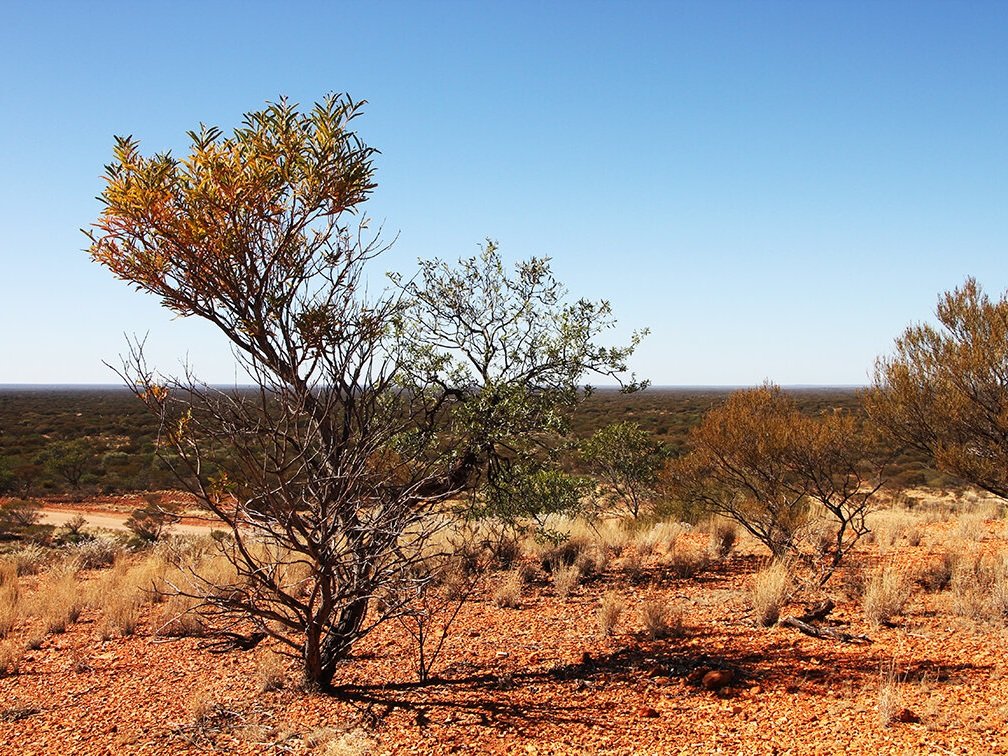Perfumers’ Notes: Olfactory Differences of Australian Sandalwood and Indian Sandalwood
What does modern sandalwood oil smell like? Our in-house perfumers explain the differences between Australian sandalwood (Santalum spicatum) and Indian sandalwood (Santalum album) oils, and some unexpected applications for Australian sandalwood (Santalum spicatum) in perfumery.
Spanning multiple continents, seas and people, the Santalum genus, or Sandalwood as it’s commonly known, has evoked the imagination of healers and creators for millennia. Grown in symbiosis with neighbouring trees, sandalwoods develop an essential oil at their heart (heartwood), rich in aroma and therapeutic constituents.
For perfumers, three main species of sandalwood oils have emerged in contemporary palettes: Indian sandalwood (Santalum album), New Caledonian sandalwood (Santalum austrocaledonicum) and Australian sandalwood (Santalum spicatum). While ‘sandalwood’ links them all, biology, terroir and distillation methods are just some of the many factors that make each distinct.
Here, our in-house perfumers explore one dimension: the olfactory nuances of Australian sandalwood (Santalum spicatum) as it compares to the Indian Sandalwood (Santalum album) variety.
How is sandalwood used in perfumery? From carrier to character
Sandalwood’s use in formula has evolved over time due to the combined factors of price, availability, the rise of synthetic materials, and the evolving needs of perfumers.
Throughout history, sandalwood was the heart of fragrance creation, used as a carrier oil in India to create attars (derived from the Arabic word ‘Itr’, meaning scent). In attar creation, floral notes are co-distilled onto sandalwood oil, resulting in an oil that can be blended and aged, and used in fragrance, flavour and medicine. In 20th Century French perfumery, decadent doses of sandalwood at concentrations of around 20% were seen in perfumes like Guerlain Shalimar (1921) and Samsara (1989), and Chanel Egoiste (1990).
“Today sandalwood essential oil is used more as a character enrichment note”
Today sandalwood essential oil is used more as a character enrichment note, commonly at levels between 0.1% to 2%, reaching as high as 6-8 % in certain fine fragrance categories. The fixative effects that sandalwood presents have been augmented by other materials such as musks, lactones and high performing sandalwood aroma chemicals (javanol, ebanol, polysantol), yet on their own, they remain a poor aromatic substitute for real sandalwood, lacking the complexity and character of the essential oil.
Modern sandalwood accords blend essential oil with synthetic materials to achieve the sweet creamy traditional sandalwood note and sillage, and are quite useful in creating the archetypal comforting, sensual ‘nuzzling effect’ that fragrance lovers have long associated with sandalwood perfumes.
What does sandalwood smell like?
Australian sandalwood (Santalum spicatum) essential oil is particularly effective as a character note, offering complexity and many different nuances. Broadly speaking, the oil is valued for three different ‘territories’, and the way these territories interact.
The tension between its woody character - ‘dry, woodshop, fresh cut wood’ counterbalanced against its ‘milky, sweet and creamy’ undertones is what gives sandalwood its unique olfactive appeal. This, coupled with its rich, warm spiciness, gives S.spicatum its unique character.
While some perfumers remember Australian sandalwood (Santalum spicatum) oil as it was in its earliest incarnations in the early 2000’s, today the oil is different by virtue of improved provenance and decades of research to optimise wood sources, processing and distillation to enhance the product quality. Below we’ll explore Dutjahn Sandalwood Oils Fine Fragrance Oil (FFSO) - to request your sample please contact us.
The defining factors of Australian sandalwood (Santalum spicatum) are its complexity, its warmth, its freshness, and its spiciness. When considering the oil our three main descriptors would be:
Woody, Creamy and Spicy
These olfactory characters vary according to the provenance and part of the Australian sandalwood (Santalum spicatum) tree that is distilled, for example the chemistry and olfactory profile vary between the base and log of a single tree. Similarly, trees from the Kutkububba Aboriginal Community which supplies Dutjahn Sandalwood Oils has on average far better chemistry and olfactory profile than other sourcing regions. This is due to a combination of genetics, terroir and processing.
Woody
When we speak of woodiness in relation to sandalwood, we are talking of a warmer more ‘humid’ woodiness as compared to something like Cedarwood, which could be regarded as a drier kind of wood. Australian sandalwood has a slightly fresher woodiness compared to S.album, and so in this regard could be a little closer to cedar than its S.album counterpart.
Following the trend of today’s woody perfumes to emphasise the drier, ambery notes in wood (think Santal 33 with its huge dose of ambroxan and cedar), we believe S.spicatum’s fresher, drier profile is well suited to those chasing a new generation of sandalwood appreciators.
Creamy
There is a lactonic creaminess to all sandalwood types. While Indian or Mysore type sandalwood (Santalum album) creaminess is more linked to thickened cream and butter, we find the aspect of S.spicatum to be fresher, more akin to fresh milk.
This creaminess is brought to life within the creations of Santal Blush (2011) and Santal Precieux (2020).
Spicy
In S.album, facets of clove and hot spices are found . While these facets are present in S.spicatum, we find that S.spicatum has more complexity and a richer spice facet. And while indeed GCMS results show the presence of b-curcumene, a molecule present in tumeric and dried spices, there is insufficient data to present a direct correlation.
What we can say is that S.spicatum is known to have a warmer, spicier and more complex top note. Some of our oils, particularly the roots and butts harvested from the desert have this complex warm spicy character pushed to the forefront, while others like our cultivated wood presents a smoother, greener profile.
Le Labo Santal 33 beautifully illustrates this spicy character with its cardamom and sandalwood accord, as does Acca Kappa 2014 release Black Pepper and Sandalwood.
S.album can have a fruity top note similar to ingredients like davana or tagete, whereas our S. Spicatum oil leans towards a fresh and floral aspect, which can greatly assist muguet and rose accords. In certain grades of high-quality sandalwood, there can also be a slight camphoraceous note that compliments the warm nutty character of the wood. Incense makers have known of this quality for a long time and have added borneol to compliment this quality and is a great pairing if your sandalwood formula requires lift.
Part 2 - Demonstration formula
Due to its spice character and fresher profile, we believe that in products desiring a creamy-milky character with freshness, power and diffusivity, S.spicatum is a good choice. S.spicatum’s additional warm and spicy facets can be used to amplify sometimes unexpected pairings, like muguet. Even just 0.1% of S. spicatum can turn up the volume of a fragrance.
To explore Australian Sandalwood’s (Santalum Spicatum) benefits in use, try the demonstration formulas below, or try this with any muguet accord you may already have. The S.spicatum woody, creamy, spicy character adds strength, projection and naturality to the accord.
We also notice the accord become fresher and higher impact due to the power and spicy facets of the S.spicatum. What differences do you notice? We’d love to hear your feedback.
Overall we have found that S. spicatum presents much earlier in a formula than other sandalwood species, making itself olfactively known before others in a dry down. Australian sandalwood exists in an interesting perfumery space featuring in many scents with sandalwood — lending great performance, presence and sophistication to a wide variety of applications.
To receive samples of Dutjahn Sandalwood Oils range of S.spicatum oils or to learn more about its benefits in use please contact us or visit





